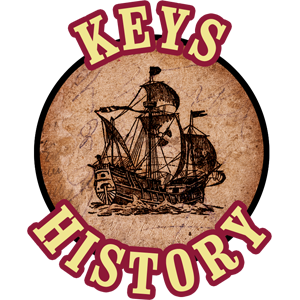Key West’s New ‘Spirits of the Passage’ Exhibit Documents Maritime Slave Trade
KEY WEST, Florida Keys — In 1700, the English merchant slave ship Henrietta Marie sank 35 miles west of Key West shortly after offloading 190 captured Africans in Jamaica. Nearly 325 years later, using the shipwreck and artifacts recovered from it as a focal point, Key West’s Mel Fisher Maritime Museum is unveiling a comprehensive exhibition that examines the transatlantic slave trade in the context of its time.
Visitors to the museum, located at 200 Greene St., can view the “Spirits of the Passage” exhibition starting in October. It documents the slave trade, its legacy and its Florida Keys heritage — including Key West’s role in the U.S. Navy’s early anti-slavery effort — through educational panels, compelling large-scale graphics, sound recordings, and artifacts such as shackles used to restrain Africans during the sea voyage that carried them into slavery.
“Physical evidence of the voyage between Africa and the Americas, known as the Middle Passage, is rare worldwide and this collection is unique in the Americas,” said Madeleine Burnside, Ph.D., the museum’s chief curator and an authority on the maritime slave trade.
Discovered in 1973 by a team contracted to shipwreck salvor Mel Fisher, the Henrietta Marie is believed to be the world’s biggest source of tangible objects from the early years of the slave trade. A goldmine of information about the tragic yet pivotal period of African American history, it yielded countless artifacts that were recovered and subsequently conserved by museum experts.
The Key West exhibition informs museum visitors about the maritime slave trade from the early 1600s to the Civil War. Exhibit modules re-create portions of the Henrietta Marie and depict aspects that range from captured Africans’ homeland to a Jamaican plantation experience.
Artifacts on display include the Henrietta Marie’s bell, trade goods such as glass beads and iron bars that were bartered for human lives in Africa, weapons and ship fittings, and the shackles that evoke images of struggle and misery.
Associated sound recording tell the stories of people including Olaudah Equiano of Nigeria, who was sold into slavery as a boy, eventually earned enough to buy his freedom and became an influential abolitionist; and Elizabeth Keckley, who was born into slavery, became such a talented seamstress that she was able to purchase her freedom, and eventually was dressmaker to Mary Todd Lincoln.
Also chronicled is Key West’s role as a base for the U.S. Navy’s anti-slavery squadron, and as a sanctuary for more than 1,400 Africans rescued by the squadron in 1860 from three slave ships captured in Cuban waters after the trade was outlawed.
In addition, the exhibit spotlights Key West’s African Cemetery, containing the graves of those who didn’t survive the brutal ocean crossing and died after their rescue; and the Cuban slave shipwreck Guerrero discovered in waters off Key Largo.
While the Henrietta Marie was previously featured in a smaller exhibit that toured museums in the U.S. and Caribbean, “Spirits of the Passage” is the first to examine the maritime slave trade’s 250-year history and complexity against the background of its time.
The Mel Fisher Maritime Museum opens at 10 a.m. daily and the last visitors are admitted at 4 p.m. Guided behind-the-scenes tours of the facility’s artifact conservation lab can be booked at 11:30 a.m. and 2 p.m. weekdays.
Exhibit information and ticketing: melfisher.org
Visitors to the Mel Fisher Museum can view the 'Spirits of the Passage' exhibition starting in October.
The Henrietta Marie is believed to be the world’s biggest source of tangible objects from the early years of the slave trade.




